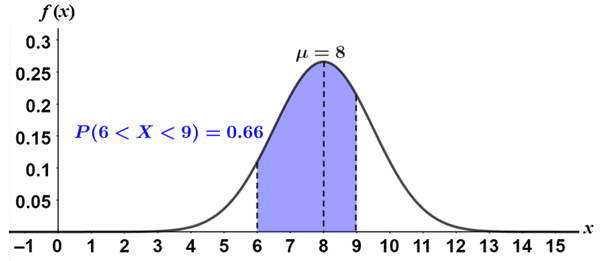Feature Selection with Integrated Gaussian Seahorse Optimization Data Mining for Cross-border Business Cooperation between the Malaysian Medical Industry and Tourism Industry
Main Article Content
Abstract
The cross-border collaboration between the medical industry and the tourism industry has gained significant attention as a promising avenue for economic growth and development. Data mining techniques are employed to extract valuable patterns and insights from large-scale datasets, shedding light on the opportunities and challenges associated with this collaborative effort. This study proposes an integrated approach that combines feature selection with Gaussian Seahorse Optimization Data Mining (GSH-DM) to identify the most relevant features and optimize the data mining process. The GSH-DM assembling comprehensive datasets encompassing information from both the Malaysian medical industry and tourism industry. The integrated GSH-DM model then applies the Gaussian Seahorse Optimization algorithm to optimize the data mining process, enhancing the accuracy and efficiency of pattern discovery. the GSH-DM model, this study aims to uncover hidden patterns, relationships, and predictive models that can guide decision-making and strategy development for cross-border business cooperation. The findings of this study contribute to a deeper understanding of the factors that influence cross-border business cooperation between the Malaysian medical industry and the tourism industry. The integrated GSH-DM approach showcases the potential of combining feature selection techniques with advanced optimization algorithms in data mining applications. The results of GSH-DM provide actionable insights for stakeholders, enabling them to make informed decisions and foster successful cross-border collaborations between the Malaysian medical industry and the tourism industry. The analysis of the results demonstrated that GSH-DM exhibits improved performance for feature selection and classification.
Article Details
References
Sukjai, P., & Srirak, C. (2022). Cross-border medical tourism of tourists in Thailand’s border provinces: A case study of Laotian tourists in Nongkhai and Udon Thani Patthaphon. Kasetsart Journal of Social Sciences, 43(1), 123-130.
Sergeyeva, A., Abdullina, A., Nazarov, M., Turdimambetov, I., Maxmudov, M., & Yanchuk, S. (2022). Development of Cross-Border Tourism in Accordance with the Principles of Sustainable Development on the Kazakhstan-Uzbekistan Border. Sustainability, 14(19), 12734.
Leick, B., Schewe, T., & Kivedal, B. K. (2021). Tourism development and border asymmetries: An exploratory analysis of market-driven cross-border shopping tourism. Tourism Planning & Development, 18(6), 673-698.
Ferrer-Roca, N., Guia, J., & Blasco, D. (2022). Partnerships and the SDGs in a cross-border destination: the case of the Cerdanya Valley. Journal of Sustainable Tourism, 30(10), 2410-2427.
Wu, R. Z., Lee, J. H., & Tian, X. F. (2021). Determinants of the intention to use cross-border mobile payments in Korea among Chinese tourists: An integrated perspective of UTAUT2 with TTF and ITM. Journal of Theoretical and Applied Electronic Commerce Research, 16(5), 1537-1556.
Lee, K., Grépin, K. A., Worsnop, C., Marion, S., Piper, J., & Song, M. (2021). Managing borders during public health emergencies of international concern: a proposed typology of cross-border health measures. Globalization and Health, 17(1), 1-19.
Tanina, A., Tashenova, L., Konyshev, Y., Mamrayeva, D., & Rodionov, D. (2022). The Tourist and Recreational Potential of Cross-Border Regions of Russia and Kazakhstan during the COVID-19 Pandemic: Estimation of the Current State and Possible Risks. Economies, 10(8), 201.
Mahato, M. K. ., Seth, S. ., & Yadav, P. . (2023). Numerical Simulation and Design of Improved Optimized Green Advertising Framework for Sustainability through Eco-Centric Computation. International Journal of Intelligent Systems and Applications in Engineering, 11(2s), 11–17. Retrieved from https://ijisae.org/index.php/IJISAE/article/view/2502
Antwi, C. O., Ntim, S. Y., Boadi, E. A., Asante, E. A., Brobbey, P., & Ren, J. (2022). Sustainable cross-border tourism management: COVID-19 avoidance motive on resident hospitality. Journal of Sustainable Tourism, 1-21.
Poulaki, I., Papatheodorou, A., Panagiotopoulos, A., & Liasidou, S. (2022). Exclave accessibility and cross-border travel: the pene-exclave of Ceuta, Spain. Tourism Geographies, 24(1), 152-176.
Anastasiadou, S., Masouras, A., & Papademetriou, C. (2023, May). Attitudes toward Reproductive Tourism and Cross border reproductive care (CBRC): Legal, Economic, Ethical issues and dilemmas, possibilities and limitations. In International Conference on Tourism Research (Vol. 6, No. 1, pp. 17-23).
Omondi, P., Rosenberg, D., Almeida, G., Soo-min, K., & Kato, Y. A Comparative Analysis of Deep Learning Models for Image Classification. Kuwait Journal of Machine Learning, 1(3). Retrieved from http://kuwaitjournals.com/index.php/kjml/article/view/128
Gutiérrez, M., Sánchez-Atondo, A., García, L., Mungaray-Moctezuma, A., & Calderón, J. (2021). Understanding cross-border mobility in medium-small Mexico-US Binational regions. Mexicali-Imperial Valley case study. Transportation Research Interdisciplinary Perspectives, 9, 100324.
Mera-Gaona, M., Neumann, U., Vargas-Canas, R., & López, D. M. (2021). Evaluating the impact of multivariate imputation by MICE in feature selection. Plos one, 16(7), e0254720.
Sharma, M., & Kaur, P. (2021). A comprehensive analysis of nature-inspired meta-heuristic techniques for feature selection problem. Archives of Computational Methods in Engineering, 28, 1103-1127.
Salman, R., Alzaatreh, A., & Sulieman, H. (2022). The stability of different aggregation techniques in ensemble feature selection. Journal of Big Data, 9(1), 1-23.
Amini, F., & Hu, G. (2021). A two-layer feature selection method using genetic algorithm and elastic net. Expert Systems with Applications, 166, 114072.
Suruliandi, A., Mariammal, G., & Raja, S. P. (2021). Crop prediction based on soil and environmental characteristics using feature selection techniques. Mathematical and Computer Modelling of Dynamical Systems, 27(1), 117-140.
Thakkar, A., & Lohiya, R. (2021). Attack classification using feature selection techniques: a comparative study. Journal of Ambient Intelligence and Humanized Computing, 12, 1249-1266.
Patil, D. N. N. . (2021). Liver Tissue Based Disease Detection Using Pre-Processing and Feature Extraction Techniques. Research Journal of Computer Systems and Engineering, 2(2), 17:21. Retrieved from https://technicaljournals.org/RJCSE/index.php/journal/article/view/27
Sudharsan, R., & Ganesh, E. N. (2022). A Swish RNN based customer churn prediction for the telecom industry with a novel feature selection strategy. Connection Science, 34(1), 1855-1876.
Rostami, M., Berahmand, K., Nasiri, E., & Forouzandeh, S. (2021). Review of swarm intelligence-based feature selection methods. Engineering Applications of Artificial Intelligence, 100, 104210.
Prof. Madhuri Zambre. (2016). Analysis and Modeling of Physical Stratum for Power Line Communication. International Journal of New Practices in Management and Engineering, 5(01), 08 - 13. Retrieved from http://ijnpme.org/index.php/IJNPME/article/view/42
Too, J., & Mirjalili, S. (2021). A hyper learning binary dragonfly algorithm for feature selection: A COVID-19 case study. Knowledge-Based Systems, 212, 106553.
Omuya, E. O., Okeyo, G. O., & Kimwele, M. W. (2021). Feature selection for classification using principal component analysis and information gain. Expert Systems with Applications, 174, 114765.
Rehman, A., Khan, M. A., Saba, T., Mehmood, Z., Tariq, U., & Ayesha, N. (2021). Microscopic brain tumor detection and classification using 3D CNN and feature selection architecture. Microscopy Research and Technique, 84(1), 133-149.

